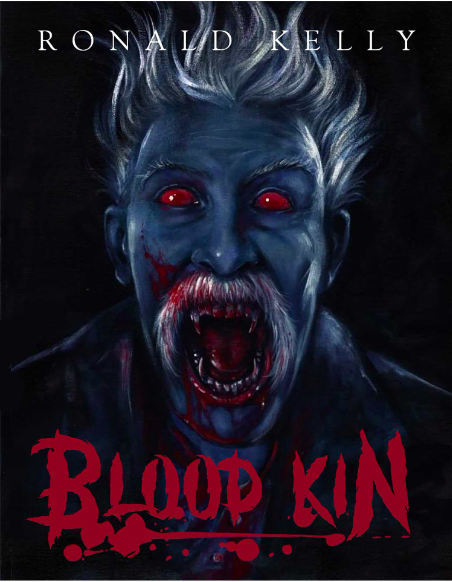
Ronald Kelly’s Blood Kin (1996) is an 80s-style vampire romp complete with uncomplicated bloodsuckers who relish their power, stakes galore, and, of course, flashbacks from Vietnam. For a Gen X’er like me, it’s a nostalgic comfort read. Part of this pleasure comes from the novel’s self-consciousness. Kelly makes vampire fiction itself part of the story and represents what happens to those who do not appreciate the genre. As a reader, it feels good to have the correctness of my literary tastes confirmed. More than just a retread, though, Blood Kin revitalizes the vampire tradition by situating it in the Appalachian mountains. The curses of the characters (“Shitfire!”), prevalence of half-ton trucks, and abundance of guns set this tale apart from those based in Europe or the American Northeast.
While plowing his field, Dudley Craven accidentally unearths the casket of his great-grandfather, itinerant preacher Josiah Craven. When he removes the bean pole lodged in the Reverend’s heart, he unleashes an evil that had been contained since 1898, when Elizabeth Craven staked her spouse, ending his reign of terror. Now, Grandpappy Craven seeks to gather all of his kin in a church of the dead. Standing in his way is a motley crew of locals: Boyd Anderson, an alcoholic carpenter; Tammy Craven, a pastor’s wife and reader of horror; and Caleb Vanleer, a mountain man and Vietnam vet. Will the three overcome their foibles in time to stop Craven’s plan?
Though Boyd is the novel’s central figure, my favorite character is Tammy. An emotionally abused pastor’s wife, Tammy must hide her horror novels under the mattress or face the ridicule of her husband, Reverend Wendall Craven. But when her husband is bitten by Josiah and begins his own bloody evangelism, Tammy is the only one in town who has the expertise to stop him. With her big glasses, mousy brown hair, and secret reading habits, she comes from a long line of socially awkward characters whose knowledge of vampire lore ultimately saves the day: Mark Petrie in Salem’s Lot (1975), Charlie Brewster in Fright Night (1985), and the Frog brothers in The Lost Boys (1987). This list could go on and on.
Casting Tammy as a successor to these characters, Kelly transforms her cheap paperback into an almost oracular text that not only prepares her in a general way to fight vampires–use crosses, stakes, holy water, etc.–but also demonstrates a predictive power that borders on the magical. It offers a verbatim account of what is to come. Austin, a character in her novel, runs from a foe whom, he mistakenly believes, is following him on foot. As he looks over his shoulder, a winged and manically laughing vampire attacks unexpectedly from above. This fiction within a fiction is enacted in the next chapter when Dudley Craven runs from Josiah only to see the minister soaring overhead. In Blood Kin, life imitates art. Initially dismissed as low-brow trash, Tammy’s vampire novel is later exonerated as a faithful representation of reality.
The best kind of vampire novels are metanarratives–that is, they are stories about the importance of vampire stories–and Ronald Kelly’s Blood Kin is at the top of this class. It dramatizes the merit of a genre that is often belittled as childish fantasy and celebrates the wisdom of those who enjoy it. In this way, the novel made me feel good for indulging my love of vampire fiction and reminded me that I am part of a community of horror lovers. Reading Blood Kin is like going to a screening of The Rocky Horror Picture Show: Your knowledge of the cultural cues is what makes it so much fun!